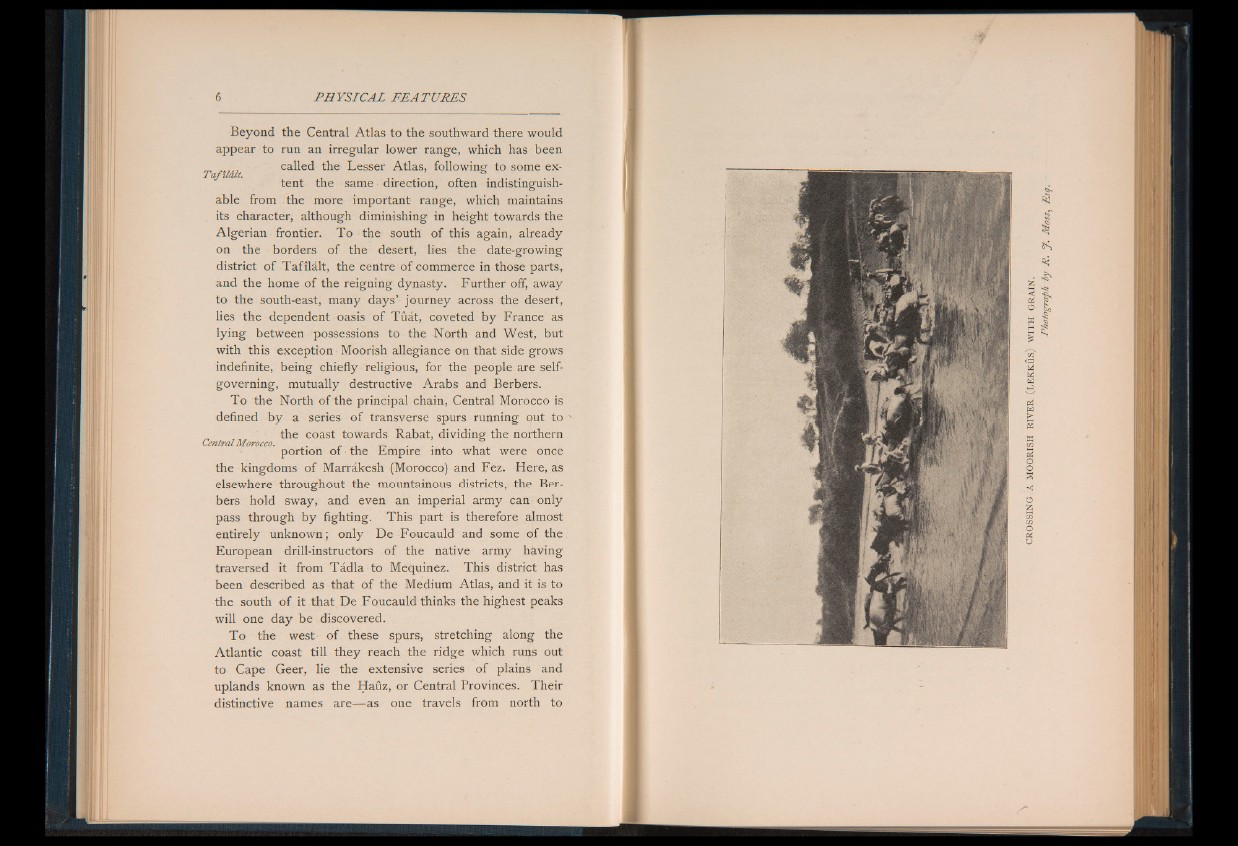
Beyond the Central Atlas to the southward there would
appear to run an irregular lower range, which has been
„ „ called the Lesser Atlas, following to some ex-
T a fild lt. . S
tent the same direction, often indistinguishable
from the more important range, which maintains
its character, although diminishing in height towards the
Algerian frontier. To the south of this again, already
on the borders of the desert, lies the date-growing
district of Tafilalt, the centre of commerce in those parts,
and the home of the reigning dynasty. Further off, away
to the south-east, many days’ journey across the desert,
lies the dependent oasis of Tuat, coveted by France as
lying between possessions to the North and West, but
with this exception Moorish allegiance on that side grows
indefinite, being chiefly religious, for the people are self-
governing, mutually destructive Arabs and Berbers.
To the North of the principal chain, Central Morocco is
defined by a series o f transverse spurs running out to
the coast towards Rabat, dividing the northern
Central Morocco. .
portion of the Empire into what were once
the kingdoms of Marrakesh (Morocco) and Fez. Here, as
elsewhere throughout the mountainous districts, the Berbers
hold sway, and even an imperial army can only
pass through by fighting. This part is therefore almost
entirely unknown; only De Foucauld and some of the
European drill-instructors o f the native army having
traversed it from Tadla to Mequinez. This district has
been described as that of the Medium Atlas, and it is to
the south o f it that De Foucauld thinks the highest peaks
will one day be discovered.
To the west of these spurs, stretching along the
Atlantic coast till they reach the ridge which runs out
to Cape Geer, lie the extensive series o f plains and
uplands known as the Hauz, or Central Provinces. Their
distinctive names are— as one travels from north to